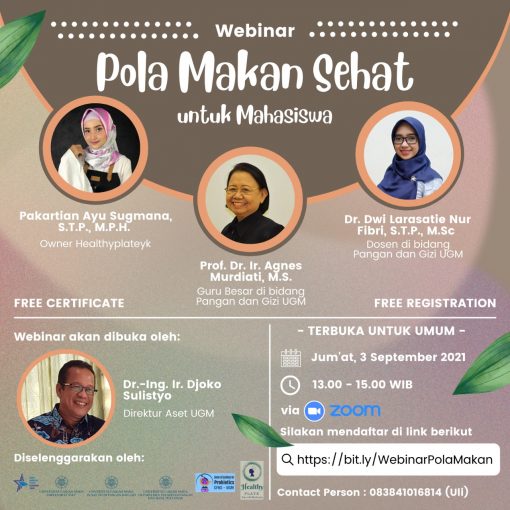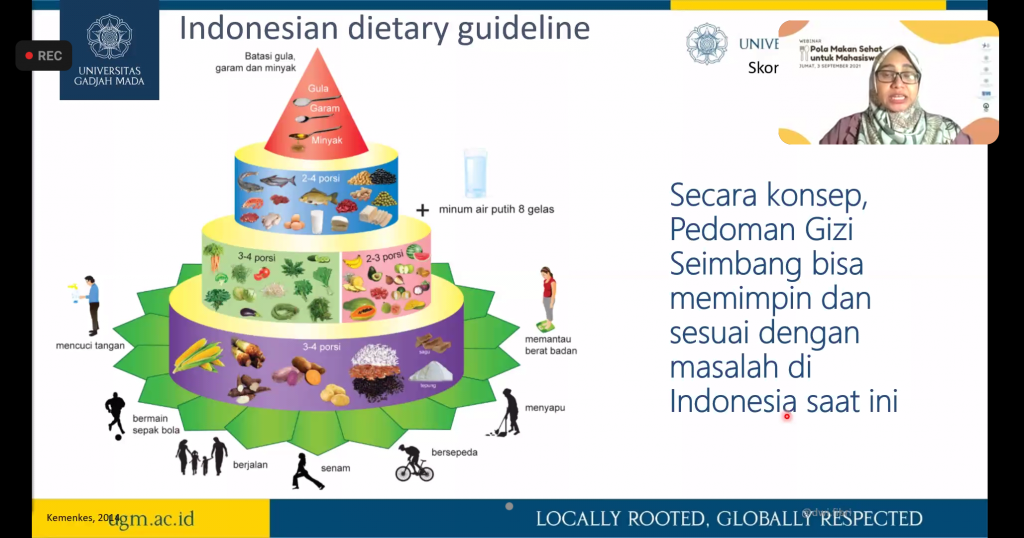
The webinar “Healthy Eating Patterns for Students” was held on Friday, September 3, 2021, through the Zoom platform. The event was opened by Dr.-Ing. Ir. Djoko Sulistyo, Director of UGM Assets. The material “Healthy Eating Patterns for Students” was delivered by Prof. Dr. Ir. Agnes Murdiati, M.S. (Professor in Food and Nutrition UGM), Dr. Dwi Larasatie Nur Fibri, S.T.P., M.Sc. (Lecturer in Food and Nutrition UGM), and Pakartian Ayu Sugmana, S.T.P., M.P.H. (Owner Healthyplateyk).
In general, both male and female students have very varied body weights and heights. The activities carried out are also included in the moderate activity category. However, most students have a habit of only eating 2 times a day, especially those who board, so the possibility of calorie intake has not been fulfilled. In addition, students’ eating patterns also need to be questioned whether they have followed a healthy diet or not.

A healthy diet is based on the Food Pyramid and My Plate Contents of the Balanced Nutrition Guidelines (PGS, 2014) issued by the Indonesian Ministry of Health to replace the General Guidelines for Balanced Nutrition and or 4 Healthy 5 Perfect. Balanced nutrition is very important for the body because it is useful as a source of energy, a source of regulated substances, and a source of building and maintenance substances.
According to the EAT LANCET Commission, a diet rich in plant-based foods and less animal-based foods will be more beneficial for health and the environment. The EAT LANCET Commission recommends 3 interventions or large-scale actions, including dietary changes towards a Planetary Health Diet, a 50% reduction in food loss and food waste, and improved food production practices.
The main concept of the Planetary Health Diet is dietary diversity so that my plate contains caloric contributions from whole grains, plant-based proteins, unsaturated fats, and fruits and vegetables. This dietary change will prevent about 11% of deaths/year, equivalent to 19-24% of total adult deaths, and can reduce premature death rates by 20%. In addition, Ms. Agnes also added that the application of the healthy eating concept must also consider culture, taste and price acceptance, local food availability, and national issues.
